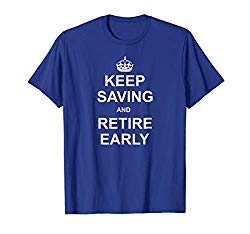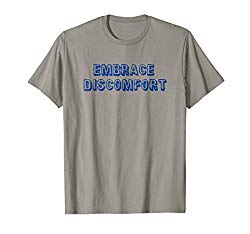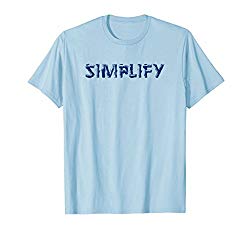

Where Work Pays: Occupations & Earnings across the United States – This awesome interactive map from the Hamilton Project allows you to see where people in your profession earn the most in the USA. *See my post on the tool here.
Putting Your Major to Work: Career Paths after College – Another great Hamilton Project tool that calculates the annual median earnings for men and women of various ages who have graduated with a particular major and entered a given occupation.
Bureau of Labor Statistics Occupational Employment Statistics map – The BLS OES map serves up valuable data about jobs and salaries in a simple mapping interface. See my full post on this tool here.
(Don’t Quit Your Day Job) Income Percentile by State Calculator for 2018 – This is an income by state calculator for the United States in 2018, for either individual income or household income.
Financial Toolbelt – This site has a tool that shows the top paying jobs by location, as well as a career database with salary and employment data on over 550 careers.
Income Extremes – This interactive map shows the richest and poorest households in each census tract area in the United States. The map visualizes two dot map layers showing the number of households earning over $200,000 and the number of households earning under $25,000.
Predominant Income Range by Households – This interactive map shows the most dominant income range in each census tract in the United States. The map uses income data from the 5-year American Community Survey in 2016 to show the income range of the most people in each Census tract.
Doximity – If you work in the medical industry Doximity has a map and data designed to help you explore salary trends, median home prices, and years to own a home by your unique specialty and geographic area. Doximity does require you to register with an account.
CareerOneStop – this tool will return salary information for more than 800 different occupations based on location. You simply enter an occupation and a location.
PayScale.com – This site will give you a salary report after asking a series of questions about your job and benefits. You do have to establish an account to see the full report.
Indeed.com – Indeed has some salary tools that compare across companies, but not with location.
 Smart Asset Rent vs. Buy Calculator – This is one of the best rent versus buy calculators out there. It incorporates a lot of metrics in that others don’t such as H.O.A. fees, maintenance costs, and homeowners insurance. See my post on it here.
Smart Asset Rent vs. Buy Calculator – This is one of the best rent versus buy calculators out there. It incorporates a lot of metrics in that others don’t such as H.O.A. fees, maintenance costs, and homeowners insurance. See my post on it here.
Should You Rent Or Buy In Your Neighborhood – This tool from Noble datum is pretty slick and they detail the methodology behind their calculations.
ESRI Map: Median Incomes And Home Values Across America – This detailed map shows median incomes in comparison to home values for every state, county, zip code, and census tract in America. See my post about it here.
Housing Units Valued At Less Than $100,000 – Social Explorer has a great interactive map that shows housing units valued at less than $100,000 using data from the Census Bureau. See my post about it here.
Realtor.com Comparison Tool – A nice simple tool to compare moving and relocation factors like housing costs, city population density, crime, weather and schools.
Realtor.com Median Sales Price Map – This great interactive map shows the median list price of homes in every zip code in America, including the changes in month-over-month or year-over-year increments. See my post about it here.
Rentometer – This site let’s you enter an address and rent cost and will tell you if what you’re paying is too high or too low. It used to be fully free but now only allows a few queries before making you subscribe.
Rent Jungle Comparison Tool – How much should you be paying in rent? How much should you be charging in rent? These are the questions Rent Jungle can now answer for you.
My Rent Rates – Analyze your property on this site and find out your average rent, the rent rates in you area, and more information about your rental.
Rentrange – This site let’s you do rent comparisons, rental estimates, and rental market analysis nationwide.
RentFax – This site performs rental property analysis using a proprietary algorithm & Proforma Analysis for rental property selection and management.
Zillow Rental Manager – Zillow has a rent estimate tool for landlords that’s completely free although you do have to provide an email address to use it. It will give you rent estimates and show local competitive rentals listed on Zillow.
“Where the American Dream Goes to Die”: Changes in House Prices, Rents, and Incomes since 1960 by Region & Metro. – This site shows the discrepancy in growth between incomes, rents, and house prices in major regions and cities in the US.

This ArcGIS Mapping tool from ESRI is chock full of data to help you narrow down a job search based on location. *For help with this tool see my post.
This ESRI Mapping Tool allows you to find the total number of jobs that can be reached within a 30-minute public transit ride starting at the block group centroid. *For help with this tool see my post.
U.S. Census Mean Travel Time To Work – This interactive map from the Census Bureau let’s you drill down to the county level and shows the mean travel time to work.
Average Commute Time – this site asks you for a zip code and how many minutes you spend commuting and then compares it to the average for that zip code and state. It also has a nice interactive map that comes up o the results page when you can compare counties.
Mapnificent – This great tool shows you areas you can reach with public transport in a given time. It has most major urban areas in the US and abroad but not mid-size or smaller towns
TravelTime Platform – This tool shows you what is reachable via cycling, walking, public, transport, driving, and even driving + train.
Access Across America: Transit 2018 –This is an annual report with detailed analysis from the University of Minnesota about access to transit in major urban areas in America. They score urban areas based on accessibility to jobs by transit, with detailed breakdowns by time of travel.
Smart Location Calculator – The Smart Location Database is a nationwide geographic data resource that uses EPA data for measuring location efficiency by Census block. It includes more than 90 attributes summarizing characteristics such as housing density, diversity of land use, neighborhood design, destination accessibility, transit service, employment, and demographics.
 WalkScore.com – This tool analyzes hundreds of walking routes to nearby amenities and gives points based on the distance to amenities in each category. *See my post on this tool
WalkScore.com – This tool analyzes hundreds of walking routes to nearby amenities and gives points based on the distance to amenities in each category. *See my post on this tool
15 Minute Mapping Site – Simply enter your address or zip code in the box on the left when you open this site and the map will zoom to the area and show what is reachable within a 15 minute walk. See my post about it here.
ArcGIS.com Walkability Index Map – this tool let’s you browse areas and see their relative walkability. It includes data that show:
- Street intersection density
- Proximity to transit stops
- Employment Mix (The mix of employment types in a block group such as retail, office, or industrial)
- Employment & Housing Mix (places where businesses reside near housing)
- Census blocks ranked by the density of streets, transit, employment, and housing
The Sprawl Map – Sprawl is characterized by poorly connected streets – a maze of cul-de-sacs and loops where people are dependent on private cars. The Sprawl Map colors these areas red on the map and covers the entire world.
 ESRI Population change 2010- 2019 map – Using Census Bureau data ESRI has made a slick interactive map that shows the population change by Census Tract across America from 2010 to 2020. See my post about this tool here.
ESRI Population change 2010- 2019 map – Using Census Bureau data ESRI has made a slick interactive map that shows the population change by Census Tract across America from 2010 to 2020. See my post about this tool here.
ESRI Where Americans Are Moving Map – This interactive map shows where Americans are moving to, specifically in the past year. See my post about it here.
Population Migration According To Tax File Status – The folks at ESRI also have maps that visualize population migration by where people filed their taxes. The IRS records when people move from one state to another from their tax returns. The data in the ESRI maps is from 2015 – 2016, the most recent available.
Census Bureau Flow Mapper Tool – You can click on any county in the U.S. or choose it from the pull down menu and the map will update to show the net migration in and out of that county from other counties. All affected counties will be highlighted either blue or orange depending on whether it was a migration to or from.
U.S. County-to-County Migration 2012-2016 – This interactive map uses data from the American Community Survey to show the migration numbers between different counties. This likely won’t work well on your cell phone as it relies on mouse hover-overs to show data.
Migration And Population Change 2018 – The Joint Center For Housing Studies at Harvard University hosts this nice interactive population change map for 2018. It has data at the county level and also shows net international migration numbers.
 Stanford University Opportunity Map – Stanford created the Stanford Education Data Archive (SEDA) which is the first national database of academic performance in the U.S. This awesome and complex interactive map and scatter chart let you compare standard math and ELA test scores across school districts in America, as well as by individual school. See my post on this tool here.
Stanford University Opportunity Map – Stanford created the Stanford Education Data Archive (SEDA) which is the first national database of academic performance in the U.S. This awesome and complex interactive map and scatter chart let you compare standard math and ELA test scores across school districts in America, as well as by individual school. See my post on this tool here.
The Center for American Progress College Attainment Map – This map shows the levels of college degree attainment in each of the 3,000+ counties in the United States and Puerto Rico. It also shows the location of most U.S. colleges and basic data about them.
National Center For Education Statistics College Map – This interactive map shows most colleges in the U.S. and let’s you narrow down by major, tuition amount, availability of on-campus housing, and numerous other variables.
Kiplinger College Finder – This is a simple but effective college finder that allows you to filter colleges by lots of variables – tuition, number of students, average debt at graduation, and region of the country.
State Individual Income Tax Rates and Brackets for 2020 – TaxFoundation.org has the best data for states and you can even download the brackets in .pdf or .xls format.
Smart Asset Tax Calculator – This tool lets you enter a salary and location and it will calculate your Federal Taxes, state and local taxes for the location, and FICA taxes.
WalletHub – Most sites that rank state by tax burden focus only on income tax, property taxes, and sales & excise taxes. WalletHub goes beyond that and adds in additional measures such as food tax, personal property tax, and gas taxes.
World Population Review – Another great site that shows various taxes by state. Besides the obvious ones like income tax they include alcohol taxes, capital gains taxes, social security taxes, and taxes on military pensions among others
Escapees – This group offers RV advocacy, mail services, and lots of other resources for RVers and those living on the road.
FMCA – The Family Motor Coach Association is a club that offers some really nice member benefits for those on the road. The site also has a great forums section.
Xscapers – This site has resources for RVers and mobile living and also has a job board to help you find a sweet mobile gig.
The RV Advisor – This site like the others has resources for RVers but is also big on RV advocacy. They also have a roadside assistance program akin to AAA as well as other perks.
Campendium – This is probably the biggest and most comprehensive site to help locate places to camp with your RV or van.
RV Park – This site has commercial RV park locations by state and information for each location. It also covers Canada.
RV-camping.org – States have different RV camping resources and regulations and this site has a great clickable map to help find the best campsites and locations no matter where you want to go.
Cities And States That Will Pay You To Move – The website MakeMyMove.com is a central hub to find places in the United States currently offering incentives to relocate. See my post about it here.
HowMuch.net True Cost Of Living Map – HowMuch.net has issued a slick new interactive cost of living map that attempts to give a more accurate measure of the true cost of living in American census tracts based on your personal situation. See my post about it here.
PovertyUSA Map – This cool map shows TONS of data including the population of each state or county, the percentage of people living in poverty, and the poverty rate. It also shows the median household income, the deep poverty rate, median rent, the unemployment rate, and the percentage of people without health insurance.
Unemployment Map from Sites USA – This interactive county-level map of America shows this rise and subsequent fall of the unemployment rate from COVID-19 in bi-weekly intervals for the entire United States. See my post about it here.
BestPlaces – This site is not geared particularly toward jobs and finances per se but is chock full of data about the best places to live.
Areavibes – This site is chock full of data and has a nice map interface for certain topics. If you play with the site you’ll find it has troves of data about schools, crime, jobs, and also links to live real estate listings among other things.
Niche.com Best Places To Live – This is a nice site that let’s you filter out results based on your priorities (nightlife, political leanings, cost of living, walkability)
Teleport – This site also has a mobile app and covers the world. You can see data about cost of living, taxation, and crime among other things.
Homesnacks – This site combines data from over 60 categories into bite-sized articles to help you understand what it’s like to live in different places in America.
The Trust For Public Land – This site will show what percentage of people in a given area live within a 10 minute walk of a park as well as what percentage of an areas land use is dedicated to parks.
Best U.S. Cities to Live and Work Remotely – You choose the qualities that matter to you — political leanings, crime rates, walkability, affordability, religious affiliations, weather and more — and this site shows you a list of cities that suit them.
Marketwatch – Where Should I Retire – Select your desired weather, financial considerations, and size of the metro area you’d like to live in during retirement with this tool and it’ll give you 10 customized suggestions that fit you best.
Livability.com – Pick a city or state and this site will show data about real estate, businesses, schools, and health.
Numbeo.com – This tool is a bit clunky but let’s you compare two different locations based on a number of factors including housing prices, crime, cost of living, pollution, traffic, and healthcare.
FCC Fixed Broadband Deployment – You can enter an address on this site and it will show the number of broadband internet providers available at that location.











































Recent Comments